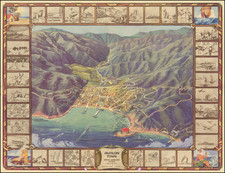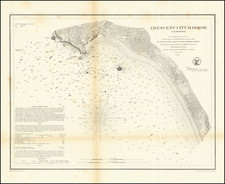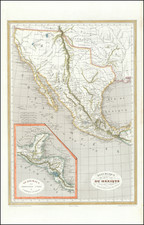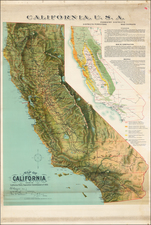Important early map of the California Gold Regions, being the first true guide map the to the newly discovered Gold Diggings and the first to name Sutter's Mill.
Lawson's map of the Gold Regions is the first map to accurately depict California' s Gold Regions, at the beginning of the 1849 California Gold Rush. The map was produced specifically for by of prospectors and miners. While the map is somewhat crude and irregular in nature, its intent as both a guide map and promotional map of the Gold Regions is apparent, including many references to gold: "Gold found on all these streams…" , "Low Clay Hills and Gravel containing gold…", "Very high rugged hills covered with pine & other timber & containing Gold." Indeed, this is one of the first maps to apply the name, "The Golden Gate," to the entry of San Francisco Bay.
Streeter noted that Lawson's map was "the second separately issued map of the gold region, being preceded only by the separately issued Larkin map of 1848, which however showed merely the Sacramento Valley. Large scale maps, such as this, are the only satisfactory ones for the gold region. From 1849 on almost every map showing California at all indicates the 'gold region' in color or otherwise, but, with few exceptions, on such a small scale as to be of little value, especially for the use of a miner or prospector."
The map also references "Mountain Lake", one of the earliest appearances of Lake Tahoe on a printed map and significantly pre-dating its being named Tahoe (the first name for the Lake was Bigler Lake).
Though based on Ord's 1848 Topographical Sketch of the Gold & Quicksilver District of California, which Wheat called "the first map to make any pretense at cartographical accuracy after the gold discoveries," Lawson's map varies significantly from Ord's map, including many additional place names, ranches and householders as well as several recorded locations of gold-strikes, trails, forts and stores.
The map shows the sea-routes from the East Coast to San Francisco - both the journey entirely by water rounding Cape Horn and the route involving land journeys across Panama and Mexico.










![[Mission San Luis Rey] Vue de La Mission de Saint Louis Roi De France](https://storage.googleapis.com/raremaps/img/small/71720.jpg)



